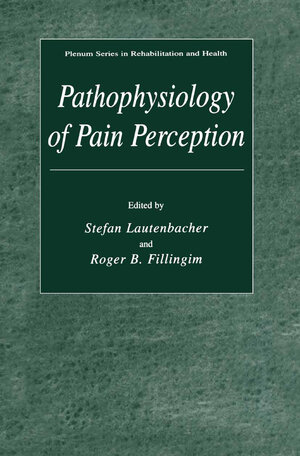
×
![Buchcover ISBN 9780306481154]()
Inhaltsverzeichnis
- 1. Basic Physiology of Pain Perception.
- to Nociception, Acute and Chronic Pain.
- Animal Studies on Nociception and Pain.
- The Peripheral Nociceptive System.
- The Central Pain System.
- The Physiology of Nociceptive Processing in the CNS.
- References.
- 2. Assessment of Pain Perception.
- Experimental Methods For Pain Induction.
- Experimental Methods of Pain Assessment.
- Summary.
- 3. Disturbances of Pain Perception in Primary Headache: Migraine, Tension-type, and Cluster Headaches.
- Epidemiology.
- Pain and Functional Impairment.
- Psychological Antecedents, Causes and Sequels.
- Muscle Tension and Vascular Reactions.
- Central Factors.
- Disturbance of Pain Perception.
- 4. Disturbances of Pain Perception in Chronic Back Pain.
- Description of the Disorder.
- Disturbances in Pain Perception.
- Conclusions and Implications.
- 5. Disturbances of Pain Perception in Fibromyalgia.
- Description of the Syndrome.
- Concluding Remarks.
- 6. Disturbances of Pain Perception in Myofascial Pain Syndrome and other Musculoskeletal Pains.
- Definition of MPS.
- General Characteristics of MPS.
- Trigger Points in MPS.
- Referred Pain in Musculoskeletal Pain Conditions.
- Hyperalgesia in Musculoskeletal Pain Conditions.
- 7. Disturbances of Pain Perception in Temporomandibular Pain Syndrome.
- Classification.
- Contrasting Concepts.
- Regional or Widespread Disorder.
- Response to Non-Noxious Stimuli.
- Hypervigilance.
- Experimental Models of TMD.
- Studies of Neurotransmitters.
- Response to Stress.
- Overview.
- 8. Disturbances of Pain Perception in Irritable Bowel Syndrome.
- Definition and Clinical Presentation.
- IBS as a Neurologic Disorder.
- Animal Models of Persistent Pain State Mechanisms.
- Human Neural Imaging Studies of Persistent Pain Conditions.
- Somatic Pain Testing in IBS Patients.
- Serotonin and IBS.
- Psychological Factors in IBS.
- Conclusions.
- 9. Disturbances of Pain Perception in Menstrual Cycle-Related Disorders.
- Pain Perception Across the Menstrual Cycle.
- Dysmenorrhea.
- Premenstrual Syndrome.
- Menstrual Cycle Influences on Other Chronic Pain Disorders.
- 10. Disturbances of Pain Perception in Disorders of the Peripheral Nervous System.
- Diabetic Polyneuropathy.
- Complex Regional Pain Syndrome (CRPS).
- Herpes Zoster.
- Trigeminal Neuralgia.
- Lumbosacral Radiculopathy.
- 11. Disturbances of Pain Perception in Disorders of the Peripheral and Central Nervous System.
- General Considerations.
- The Clinical Diagnosis of Neuropathic Pain.
- Syndromes which may be Accompanied by Neuropathic Pain.
- 12. Pain Perception in Psychiatric Disorders.
- Anxiety.
- Schizophrenia.
- Depression.
- Anorexia Nervosa and Bulimia Nervosa.
- Borderline Personality Disorder.
- 13. Alterations in Pain Perception in Cardiovascular Disease.
- Cardiovascular Variables and Pain Perception.
- Mechanisms of Blood Pressure-Related Hypoalgesia.
- Pain Perception in Coronary Artery Disease and Other Cardiac Diseases.
- Conclusions and Future Directions.
- 14. Perception of Pain during Pregnancy and Labor.
- Physiological Changes During Pregnancy.
- Pain and Discomfort in Pregnancy.
- Physiology of Labor.
- Labor Pain.
- Memory for Labor Pain.
- Factors Affecting Pain during Labor.
- The Effect of Acupuncture on Pain and Use of Analgesics during Labor.
- The Role of Endogenous Opioids in Pain Processing during Pregnancy and Labor 206.
- Experimental Studies of Pain Perception in Pregnancy and Labor.
- Conclusion.
- 15. The Importance of Quantitative Sensory Testing in the Clinical Setting.
- Applications of QST.
- Advantages and Disadvantages of QST.
- Is QST Clinically Relevant?.
- Future Directions for Clinical Applications of QST.



